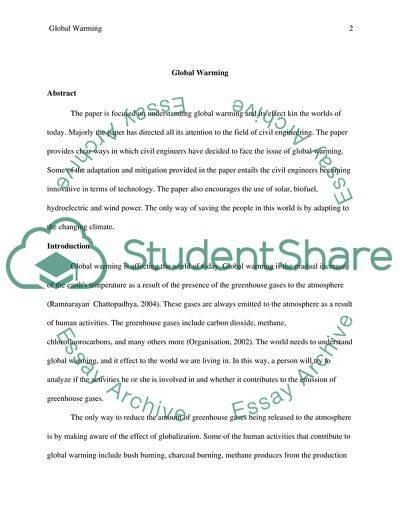Cite this document
(Clear Ways in Which Civil Engineers Have Decided to Face the Issue of Coursework Example | Topics and Well Written Essays - 2000 words - 5, n.d.)
Clear Ways in Which Civil Engineers Have Decided to Face the Issue of Coursework Example | Topics and Well Written Essays - 2000 words - 5. https://studentshare.org/environmental-studies/1868845-global-warming
Clear Ways in Which Civil Engineers Have Decided to Face the Issue of Coursework Example | Topics and Well Written Essays - 2000 words - 5. https://studentshare.org/environmental-studies/1868845-global-warming
(Clear Ways in Which Civil Engineers Have Decided to Face the Issue of Coursework Example | Topics and Well Written Essays - 2000 Words - 5)
Clear Ways in Which Civil Engineers Have Decided to Face the Issue of Coursework Example | Topics and Well Written Essays - 2000 Words - 5. https://studentshare.org/environmental-studies/1868845-global-warming.
Clear Ways in Which Civil Engineers Have Decided to Face the Issue of Coursework Example | Topics and Well Written Essays - 2000 Words - 5. https://studentshare.org/environmental-studies/1868845-global-warming.
“Clear Ways in Which Civil Engineers Have Decided to Face the Issue of Coursework Example | Topics and Well Written Essays - 2000 Words - 5”. https://studentshare.org/environmental-studies/1868845-global-warming.


